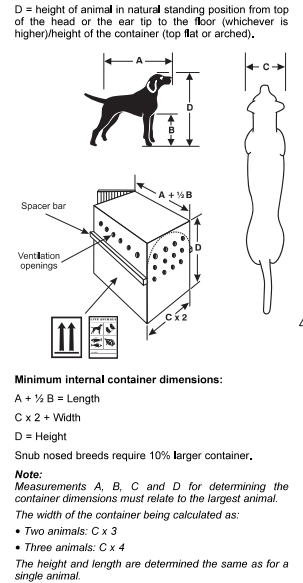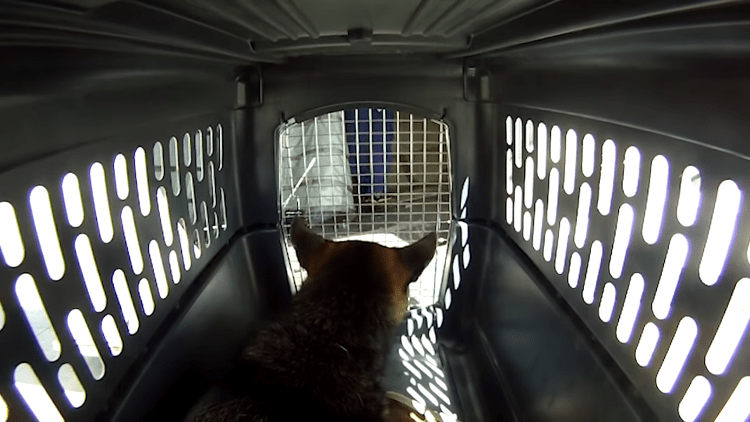IATA stands for (International Air Transportation Association). This post will discuss what is necessary to have in an IATA approved dog crate. (Note that regardless of having an IATA approved dog kennel, some dogs may not be fit to fly due to their health and physiology this will be decided by a veterinarian who will screen your pet before departure. )
If you plan to travel on an airplane, IATA Dog crates are the ones to get. Below are some of the recommended plastic dog crates that are fit for IATA standards.
However, just because you have the IATA approved crate, you need to make sure it is the right size for your dog.
Here are the IATA regulations for dog crates below.
IATA Regulations:

- Crate must not be small for the dog. Your dog must easily stand, sit, turn and lie down.
- Dog crate must be constructed of a strong plastic, fiber glass, or metal material.
- Dog crate floor must be leak proof.
- Must Have “Live Animal” and “This Way Up” stickers on at least 2 sides of the crate. The more stickers the better.
- If not traveling in the cabin, the crate must have space bars on the sides and back side of the crate ensure that airline baggage does not block ventilation.
- If the door uses locking pins, the locking pin must extend at least 1.6 centimeters deep into the locking slot.
- Door should be designed so that it can be secured with zip ties.
- Water must be available if travel time is over 12 hours.
- Your dog must not be a breed that has snub noses (Pugs, Pit Bulls, Shi Tzus, Chow chowd, Mastiffs, and etc.)
Let’s Discuss These Points a Little Further
- The size of the crate is to my opinion the most important factor when traveling on an airplane. Even if you have an IATA approved crate, it must be large enough for the dog to turn around, stand, sit, and lay down comfortably. If the crate is too small, the airline may disqualify your pet from flying. To my knowledge, It is better to get a slightly bigger crate for the peace of mind and comfort for your dog. Finally, I would always check with the airlines a couple weeks before departing. If you can, I strongly urge that you visit the airline beforehand or send pictures / videos of your dog in the crate.
- The crate material should be something that is durable. The crates we recommend here for airline travel on topdogsupply.com are all durable heavy duty plastic.
- The crate should be leak proof. Urine, vomit. and other liquids should not leak out of the crate during transport.
- Having Live Animal stickers are a good thing to have. Visible stickers remind everyone that your dog is alive and not just standard baggage freight.
- If your dog does not qualify to travel in the cabin, your dog must be secured in the cargo hold, you need to have spacer bars (airline rails). The IATA plastic crates that we have on topdogsupply.com are designed so that they already have spacers within their design. If your crate is not one of the plastic crates we have listed, then make sure they have the space bars on the sides and on the rear of the crate.
- Locking pins must be long enough. This is straightforward but the locking pins should be at least 1.6 cm. The longer the better. I would add a zip tie if possible.
- The use of cable ties is necessary. A dog crate should have additional holes around the door that allows the tying of cable ties.
- It’s always best to have some kind of water delivering device available for my dog no matter how short the flight is. You never know when there might be delays on the ground
- If you have a snub-nosed dog, know that these type of breeds can easily suffer from respiratory issues. At high altitudes snub-nosed dogs have a higher chance of having breathing problems regardless of having a well ventilated IATA crate.
If you follow the above, I’m very confident your dog will be able to fly. Remember this is just one part of the travel process. You need to do the paperwork for rabies,possible quarantine and make sure your dog is healthy enough to fly. Finally, it’s a good thing you are taking the time to read about IATA Dog Crates. It shows that you care about your dog(s). I hope I made this as simple as possible. If you have any questions or concerns, please feel free to email me.
As an Amazon Associate I earn from qualifying purchases.



